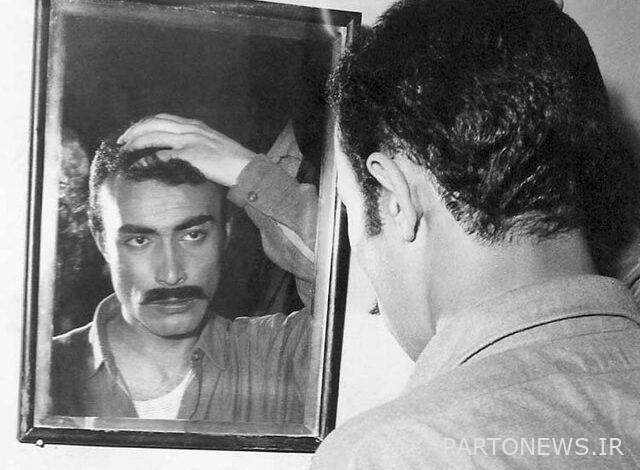An analysis of a part of cinema history in “Censorship Report of a Film …”

A film historian and researcher believes that we have easily passed many of our historical periods, while by carefully examining those historical periods and its important and influential people, we can avoid repeated historical mistakes. On this basis, looking at the confiscation of an old film, he has told stories about Iran’s first leading cinematographer.
Theater News Base: Censorship and seizure, which have plagued many films in recent years, have a very long history in Iranian cinema, and one of these seizures recorded in history is for a film by Farrokh Ghaffari, who is remembered as one of the pioneers of modern Iranian cinema.
Abbas Baharlou – writer, researcher and film historian – wrote a book about this cinematic figure during the Corona era, which most of the old cinematographers have spoken about his efforts and position in cinema. Baharloo said about his book and the reason for writing it, which you can read in detail below:
I know that you have been working for a year and a half on a book about Farrokh Ghaffari, the first leading and serious cinematographer of Iranian cinema, and especially his banned film “South of the City”. What was your motivation and reasons for this choice, or in other words, what is Ghaffari’s position with you and Iranian cinema, culture and art?
Prior to writing this book, entitled “Censorship Report of a Film: South of Farrokh Ghaffari”, I had written alternately and on occasions about Ghaffari, his films, his activities at the National Film Center and Cinema of Iran; I had seen his films, both cinematic and documentary, and reviewed his books, articles, and dialogues. Ghaffari spent nearly half a century, about fourteen years in his youth, and almost thirty years of his last life in France. He has worked and written in various film centers and magazines. His work in theatrical groups, as well as his collaboration with Henri Langlois at the Paris Cinematheque, and watching a number of important films in the history of world cinema, were many experiences for him. He was also a prolific writer and critic, writing reviews for film magazines such as Positive, The Age of Cinema, and Le Monde. When he came to Iran from Paris in the last days of 1325, he immediately set up the “National Film Center” with a group of his friends, and after one or two more trips to Paris, he made his first film called “South of the City” in 1337 in Iran. Ghaffari, who was familiar with the general atmosphere of Iranian cinema, and knew its producers more or less, wanted to take a different path.
Which way? What were the characteristics of this film and how did it compare to the melodrama films, which were made in the same years?
The script of “South of the City” was written by Jalal Moghaddam; But he and Ghaffari undertook extensive research that was unprecedented in Iranian cinema to capture a more accurate and tangible picture of places and neighborhoods in the lower part of Tehran and people who lived in forgotten and cursed neighborhoods. For three months, they went to those neighborhoods and cafes to get a better understanding of the people and their drinking, and even how they spoke and talked. Instead of Plato, the film was made in the upper parts of the city, which was common in those years, in the southern neighborhoods of the city. In those years, filming in those neighborhoods was very difficult, and even police officers were not able to provide a quiet order and atmosphere for filming. In fact, Ghaffari wanted to create a comprehensive change in Iranian cinema with this film.
And apparently did not succeed. Why couldn’t Ghaffari transform Iranian cinema or put it in the right direction with “South of the City”?
“South of the City” was shown in Tehran on December 23, 1958, but was banned five days later. Ghaffari was reassuring, and some cinema-goers acknowledged that if “South of the City” was successful in public screenings, it would set the stage for others to follow through – making the same combo and often degenerate melodramas “a little.” Distance themselves, and let Iranian cinema find its true place; In fact, the main fear, what they expressed openly and secretly, was the lack of public acceptance and censorship of the film; But the “south of the city” was not censored, it was confiscated, and with its confiscation, everything went to waste for Ghaffari and his colleagues. Ghaffari was very busy and desperate in those days; One leg was in “SAVAK” and the other leg was in the Ministry of Interior and the police to lift the ban from “south of the city”. Ghaffari and his film were subject to false accusations, which I have described in detail in my book, and its explanation here may take some time.
And what happened after the seizure of “South of the city” and in what direction did Ghaffari head?
Ghaffari, who was almost helpless under the rubble of political and economic problems caused by the seizure of the “south of the city”, knocked on every door out of desperation. When he failed to get the “South City” out of the hands of the General Police Department, he made a low-level comedy called “Which Bride?” To escape the economic crisis and the loss of his film investors, family members and one of his old comrades. A production that did not succeed in public display. “Which bride?” It was a weak film that Ghaffari did not even want to register his name in the credits. In my opinion, if the “south of the city” was going its natural way, perhaps Ghaffari would have to make “Which bride?” He could not, or at least his film did not have such quality and end. After “South of the City”, he planned to make films with various themes and genres.
When did Ghaffari start the “Film Center” and what was its impact?
Ghaffari once in 1328, before making “South of the City”, with his friends, set up a “Film Center” and screened important films; But the film center you are looking for was launched two or three weeks after the closure of “South of the City.” In fact, the establishment of the “Film Center” was a turning point or a turning point that gave the young generation interested in cinema, who had a passion for new ideas and artistic purity, a tradition and heritage that inspired many and evolved in various ways. Evidence shows that for six or seven years, the “Film Center” influenced Ghaffari more than any other activity and made him enthusiastic; Especially since he was tired of making movies.
Until the end, he was able to make the film “Shab-e Ghozi” in 1964, and when the film was shown, one of the critics spoke about the origin or, to be more precise, the “emergence of Iranian cinema.”
Yes. Ghaffari had high hopes for the success of “Shab Ghozi” in public and among critics; But the film was not well received, and among the critics, only Hajir Dariush and Karim Emami wrote about the film’s values. After the all-out defeat of “Shab Ghozi”, Ghaffari was tired of the bitter failure that he had not predicted and did not expect. It was a blow and could have completely knocked him out, but his realism and perception of current affairs and, above all, his innate spirit of restraint and self-control. The fact was that in the first half of the 1940s, Iran was mainly an agricultural and traditional society, with the majority of people living in villages and small towns in the pre-industrial period, and the middle class still not having a strong foothold. The number of illiterates in the cities and villages was too great, and the public entertainment, as far as their mouths were concerned, was listening to radio programs and reading the light and cheap footnotes of the weekly magazines; Especially since many intellectuals, at the time of separation and ignorance, were still in doubt or in their lonely cocoon. Therefore, it was not far-fetched that a film like “Shab Ghozi”, which did not belong to the Iranian cinema convoy and did not follow the deceptive customs of filmmaking, would not be successful and would not excite the masses.
And where did this heavy defeat of Ghaffari’s work lead?
Everywhere. From focusing on its activities in the “Film Center” and establishing the National Cinema of Iran and teaching cinema and making documentaries to help launch the national television of Iran and the “celebration of art” and “celebration of birch” and even cooperation with a delegation in the Ministry of Culture and Arts He worked to license the film. Some of Ghaffari’s activities during this period, despite their very positive results, caused criticism from his close friends.
And what else?
You see, talking about people with Ghaffari’s personality complexities does not fit into a short conversation, and that is exactly why the research of the book “Censorship Report of a Movie: Farrokh Ghaffari South” lasted eighteen months. I tried to give a picture of Ghaffari in great detail; As humans really are. The fact is that at least from this constitutional point of view, we have easily passed by many of our historical periods and important and influential personalities, and we may never have rightly thought that by carefully examining these historical periods and its important and influential people, we can avoid repeated historical mistakes. Let’s stay away. I hope that next year, when the book is published, we will have the opportunity to talk about this in more detail.
The 7th of Esfand 1400 is the 100th anniversary of Farrokh Ghaffari.

///.

